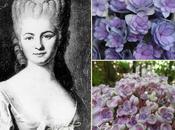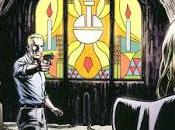My first, last love; the idol of my youth,
The darling of my manhood, and, alas!
Now the most blessed memory of mine age.1
La conferenza che ultimamente ebbi la gioia di tenere a Finale Ligure, mi diede la possibilità di conoscere, finalmente dal vivo, una persona con la quale già da mesi intrattenevo corrispondenza, ma solamente l'incontrarne lo sguardo mi ha rivelato gli aspetti più profondi del suo temperamento e del suo cuore.
Marco Giacinto Pellifroni è un uomo che ha vissuto, molto, che ha tante storie da raccontare, che ha dovuto, come spesso accade quando la vita ci riserva più eventi
spiacevoli di quanti siamo in grado di sostenere, farsi forte e quasi costruire intorno a sé una corteccia che cela un cuore molto tenero, colmo di ricordi, da cui spesso trae il dovuto conforto, un animo gentile come raramente accade d'incontrare oggi; avrei voluto, quella sera, potermi intrattenere più tempo per godere della sua amabile compagnia, ma il giorno ormai volgeva al termine, avevamo ancora un viaggio da sostenere per rientrare per rientrare a casa, spero solo che presto il futuro mi riservi la possibilità di dialogare ancora con lui.
Ebbene, alcuni giorni prima del Natale ricevetti una mail in cui egli mi manifestava il suo entusiasmo per un post che avevo pubblicato il giorno 6 dicembre dal titolo The Beauty of a modest soul, che ha come filo conduttore l'elogio della modestia « che io» mi scriveva " « ho da sempre considerato, assieme alla pazienza e alla tranquilla dolcezza, le virtù femminili per eccellenza. Non a caso erano anche le virtù più apprezzate nel "tuo" secolo, che probabilmente ti ha visto vivere, se mai la trasmigrazione delle anime non fosse solo un sogno di filosofie ed esotiche religioni.».
Scopersi allora il forte valore evocativo che per lui racchiudeva l'immagine protagonista del dipinto di Arthur Hughes, appartenente alla celebrata scuola dei Preraffaelliti, in quell'occasione già pubblicato;

egli mi confessò che questa immagine lo riportava a lieti tempi lontani, al passato contadino che a dispetto della sua affermata carriera di rinomato economista noto soprattutto nella metropoli milanese, ne costituisce le amate radici, alla giovinezza, a quello che fu per lui il Grande Amore.
E veniamo quindi alla storia di questo dipinto.
Come ormai ben sapete, la confraternita Preraffaellita tendeva a voler recuperare su tela personaggi femminili appartenenti alla mitologia, alla storia, alla poesia ( prediletti erano i temi suggeriti dal Ciclo Arturiano e dall'allora contemporanea poesia di John Keats, Walter Scott e Alfred Tennyson ) e questo dipinto non fa eccezione essendosi Hughes qui ispirato all'omonimo poema di Alfred Lord Tennyson, ( scritto nel 1835 e pubblicato per la prima volta nel 1842 ), per il quale scelse come modella, analogamente all'altro suo dipinto, più meramente autobiografico, dal titolo April Love (1855)

il suo primo e grande amore, Tryphena Ford, la giovane che maritò nell'inverno del 1855, pochi mesi prima che questo venisse esposto acquistando immediato consenso presso il pubblico londinese.
Ma veniamo a The Gardener's Daughter di Tennyson, che la tela omonima di Hughes ha ispirato e che tengo qui ad esporre; per l'estrema lunghezza che lo caratterizza mi è impossibile riproporvelo nella sua interezza, cercherò, riportandone almeno i passi principali, di farmi portatrice dei significati più salienti che lo connotano.
Questo poema che Tennyson ebbe a definire Idillio fa parte della raccolta che nel 1864 egli pubblicò con il titolo "Idyl of the Hearth" ed erano questi i primi suoi poemi giovanili, risalenti tutti a prima del 1850: In un giardino, che ha il duplice significato di luogo idillico, incontaminato, se volete anche in nome del significato Primo che le Sacre Scritture ci consegnano, e luogo per eccellenza del 'germogliare' del sentimento amoroso, egli, riporta in versi, ma si tratta di una vicenda del tutto autobiografica, la visione sublime di una fanciulla; perciò, in alcuni tratti, questo poema, per il lirismo che lo connota, assume le caratteristiche affini a quelle di un sonetto, essendo il tema amoroso quello dominante - non per la metrica, ovviamente -.
L'ora appena volata, quella del primo mattino, con tutto il suo suono,
(Ecco perché i Maggio di un tempo avevano il triplo della vitalità di questi nostri,)
Risuona ancora nelle mie orecchie. Il manzo dimentico di pascolare,
Laddove la siepe interrompe il sentiero,
Appoggiando le corna nel campo del vicino di casa,
Seguì i suoi simili. Dai boschi
Giunsero le voci di tortore ben liete,
L'allodola che per la gioia riusciva a stento a cantare le sue gaudenti note,
Ma lanciò il suo canto insieme con loro non appena si avvicinò
alla sua lieta dimora, a terra. A dritta e a
manca
Il cuculo diceva il suo nome ad ogni collina;
Il merlo dolce fluttuava dentro l'olmo;
Il gallo* emise un fischio; e l'usignoloCantava forte, come sapesse di essere l'uccello del giorno.2
In questo luogo paradisiaco Tennyson conosce la giovane dei suoi sogni e subito se ne innamora
Amore a prima vista, primogenito ed erede a tutto,
Fece questa notte così. D'ora in poi nè bufera
né tempesta
Mi potevano tenere lontano da quell'Edenin cui ella dimorava3

For Always, Walter Dendy Sadler (1854 - 1923)
Come colombe su una colombaia, che girano attorno
al loro desiderio primo, fino a quando non vi trovano
sistemazione.
Allora, in quel tempo ed in quel luogo, le parlai,
Chiedendole, nonostante sapessi che era già mia.
Non altro che per il piacere che traevo dal sentirla,
Chiedendole la sua mano quale dono più grande,
Il cuore di una donna, il suo cuore amavo;
E in quel tempo ed in quel luogo ella mi rispose,
E nell'arco di tre parole,
Più musicali che mai una sola fosse udita,
I frammenti d'argento di una voce emozionata,
Vacillante, fecero di me l'uomo più felice,"Io sono tua." 4
Dopo aver posto l'accento sulla forza dirompente e sempiterna di questo sentimento profondo, nelle ultime righe del poema predomina la consapevolezza dell'incapacità umana di mantenere la freschezza del sentimento giovanile in confronto alla potenza rigeneratrice della Natura... di fronte allo scorrere del tempo e alla morte i versi del poeta sembrano a poco a poco descrivere una fotografia, un'immagine fermata nel tempo, rubata allo scorrere dei giorni, immobile, inalterabile ed inalterata solo nella memoria, quell'immagine immortalata sulla tela dal pennello di Arthur Hughes ...
E in un mistico, quasi religioso silenzio, si leggono gli ultimi versi che concludono il poema:

Il mio primo, ultimo amore; l'idolo della mia giovinezza,
Il tesoro della mia maturità, e, ahimè!Ora il ricordo più benedetto dell'età mia. 5
Ripubblicando questo dipinto e tracciandone ed approfondendone la storia letteraria che ne fece da sottofondo, così affine a quella da lui vissuta in prima persona, ringrazio ancora Marco Giacinto Pellifroni per la delicatezza, la bontà del suo cuore e la tenera amicizia che tra di noi è nata.
Grazie.
E come sempre un grazie a voi, carissimi, che sempre mi siete accanto, lasciate che vi abbracci tutti con affetto.
A presto ♥


Bibliografia:
Goldman, Paul. Victorian Illustration: The Pre-Raphaelites, the Idyllic School and the High Victorians. Aldershot: Scolar, 1996.
Roberts, Leonard & Wildman, Stephen. Arthur Hughes: His Life and Work. Woodbridge: Antique Collectors' Club, 1997.
Suriano, Gregory. The Pre-Raphaelite Illustrators. London: The British Library, 2000.
Tennyson, Alfred, The gardener's daughter and other poems, Nimmo Publisher, Edimburgh, 1900
Note e citazioni:
* Nel testo originale si legge ' Redcap ', che, selezionato nelle aree inglesi del Derbyshire e delle Pennine, rappresenta una delle più antiche razze di pollame il cui nome deriva dalla sua incredibile cresta rosa, lunga circa cm. 7,60 e larga cm. 5, molto dentellata e molto lunga, che nei galletti giovani non si sviluppa completamente fino ai tre anni di vita, aperta come fosse la corolla di un fiore. I Redcap hanno orecchioni rossi e il loro piumaggio va dal rosso scuro al nero; il groppone e il collo sono di color arancione scuro. Le piume della coda sono nere; i tarsi grigio bluastro e gli occhi rossi. La gallina ha un bellissimo piumaggio marrone rossastro, con la parte terminale di ogni piuma in nero brillante. Stanno diventando alquanto rari, ma sono tutt'oggi ancora diffusi nella zona del Derbyshire.
1 - Tennyson, Alfred, The gardener's daughter and other poems, Nimmo Publisher, Edimburgh, 1900, pag. 20;
2 - Op. cit., pag. 11;
3 - Ibidem., pag. 15;
4 - Ibidem., pag. 17;
5 - Ibidem., pag. 20.
 To a special friend with his heart full of memories.
To a special friend with his heart full of memories.The conference that recently I had the joy of holding in Finale Ligure, gave me the opportunity to know, finally, a man person with whom I already entertained correspondence for months, but just to encounter his gaze revealed to me the deepest aspects of his temperament and of his heart.Marco Giacinto Pellifroni is a man who has lived 'a lot', who has many stories to tell, who had, as often happens when life brings us events most unpleasant than how we can bear, to drive him to be strong and to build around himself almost a bark hiding a very tender heart, full of memories, from which he often draws the due comfort, a kind soul as rarely happens to meet today; I truly wanted to be able to speak to him more time to enjoy his amiable company, that evening, but the time we had was very limited, the day was going to its end and we still had to consider our trip to come back home, I hope that soon the future will reserve us the opportunity to spend more time together.Well, a few days before Christmas I received an email in which he expressed his enthusiasm for a post I published on December 6th, entitled The Beauty of a modest soul, which has as its theme the praise of modesty « I » he wrote « I always considered it, along with patience and quiet sweetness, a female virtue par excellence. Not by chance they were also the virtues most valued in "your" century, who probably saw you live, if ever the transmigration of souls is not only a dream of exotic religions and philosophies.».I discovered then the strong evocative power he found in the image protagonist of the painting of Arthur Hughes, part of the celebrated brotherhood of the Pre-Raphaelites, I already published on that occasion;- picture 1 - he confessed to me it took him back to pleasant, happy, ancient times, to his farmer past which, in spite of his established career as a renowned economist, best known in the city of Milan, to his beloved roots, to his youth, to what was for him the Great Love.And then let's go to see the story of this painting.As you well know, the Pre-Raphaelite brotherhood tended to want to recover on canvas female characters belonging to the mythology, history, poetry ( favorite were the themes suggested by the Arthurian cycle and the then contemporary poetry of John Keats, Walter Scott and Alfred Tennyson ) and this painting is no exception being Hughes inspired here by the eponymous poem by Alfred Lord Tennyson, ( written in 1835 and published for the first time in 1842 ), where his model, as in the other early painting of his, more purely autobiographical, entitled April Love (1855)- picture 2 - April Love, Arthur Hughes, 1855was his first and great love, Tryphena Ford, the young girl he married in the winter of 1855, a few months before it was exposed by purchasing immediate consensus at the London public.But let's read The Gardener's Daughter by Tennyson, that inspired Hughes for the painting with the same name: for the extreme length that characterizes it, it's impossible to me to write it in its entirety, so I will try, reporting at least the main steps, to make me the bearer of the most salient meanings characterizing it.This poem that Tennyson had to define Idyllic is part of the collection that in 1864 he published under the title "Idyl of the Hearth" which were his first youth poems, all dating back to before 1850: in a garden, which has the double meaning of idyllic, unspoiled place, if you want even in the name of Prime Meaning that the Holy Scriptures deliver to us, and the place par excellence where 'sprouts' the feeling of love, he brings in verse, but we do know that all this belongs entirely to his autobiography, the sublime vision of a girl; therefore, in some steps, this poem, for the lyricism connoting it, assumes the characteristics similar to those of a sonnet, being that of love the dominant theme - not for the metric, of course -.
The hour just flown, that morn, with all its sound,
(For those old Mays had thrice the life of these,)
Rings in mine ears. The steer forgot to grazw,
And where the hedge-row cuts the pathway, stood,
Leaning his horns into the neighbour field,
And lowing to his fellows. From the woods
Came the voices of well-contented doves.
The lark could scarce get out his notes for joy,
But shoots his song together as he near'd
His happy home, the ground. To left and
right
The cuckoo told his name to all the hills;
The mellow ouzel floated in the elm;
The redcap whistled; and the nightingale
Sang loud, as tho' he were the bird of day.
In this heavenly place Tennyson knows the young girl of his dreams, and immediately falls in love with her
Love at first sight, first-born and heir to all,
Made this night thus. Henceforward squall
nor storm
Could keep me from that Eden
where she dwelt 2 pag 15
- picture 3 - For Always, Walter Dendy Sadler (1854 - 1923)
Like doves about a dovecote, wheeling round
The central wish, until we settled there.
Then, in that time and place, I spoke to her,
Requiring, tho' I knew it was mine own,
Yet for the pleasure that I took to hear,
Requiring at her hand the greatest gift,
A woman's heart, the heart of her I loved;
And in that time and place she answer'd me,
And in the compass of three little words,
More musical than ever came in one,
The silver fragments of a broken voice,
Made me most happy, faltering "I am thine". 3 pag. 17
Having emphasized the disruptive power of this eternal and deep feeling, in the last lines of the poem predominates the awareness due to the human inability to maintain the freshness of youthful feeling in comparison to the regenerative power of Nature... In front of the passing of time and of the death, the poet's verses seem gradually to describe a photograph, an image stopped in time, stolen from the passing of the days, unmoving, unchanging and unchanged only in memory, that image immortalized on canvas by Arthur Hughes' brush ...
And in a mystical, almost religious silence, you read the last verses concluding the poem:
- picture 4
My first, last love; the idol of my youth,
The darling of my manhood, and, alas!
Now the most blessed memory of mine age. pag 20
Republishing this painting and tracing and deepening the literary history which has made its background, so similar to the one Marco Giacinto has personally experienced by himself, I do thank him for the gentleness, the kindness of his heart and the tender friendship that between us was born.
Thank You.And as usual, thank you, my dearest friend, to be always beside me, let me embrace you all with my love.
See you soon ♥


Bibliografia:
Goldman, Paul. Victorian Illustration: The Pre-Raphaelites, the Idyllic School and the High Victorians. Aldershot: Scolar, 1996.
Roberts, Leonard & Wildman, Stephen. Arthur Hughes: His Life and Work. Woodbridge: Antique Collectors' Club, 1997.Suriano, Gregory. The Pre-Raphaelite Illustrators. London: The British Library, 2000.Tennyson, Alfred, The gardener's daughter and other poems, Nimmo Publisher, Edimburgh, 1900Notes and quotations:
* In the original text we read 'Redcap', which, selected in the areas of Derbyshire and English Pennine, is one of the oldest breeds of poultry whose name comes from its incredible pink crest, long about cm. 7.60 and wide cm. 5, very jagged and very long, and which in the young cockerels doesn't develop fully until three years of life, open like the corolla of a flower. They have red earlobes and their plumage ranges from dark red to black; the rump and neck are dark orange. The tail feathers are black; the hen has a beautiful reddish brown plumage, with the end of each feather in shiny black. They are becoming quite rare, but they are still prevalent today in the area of Derbyshire.







